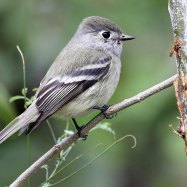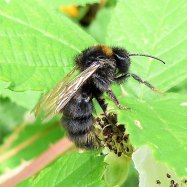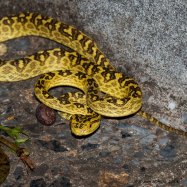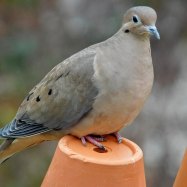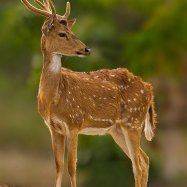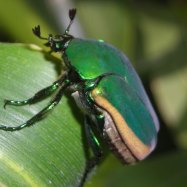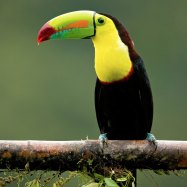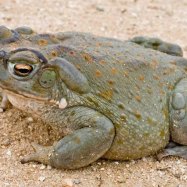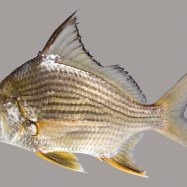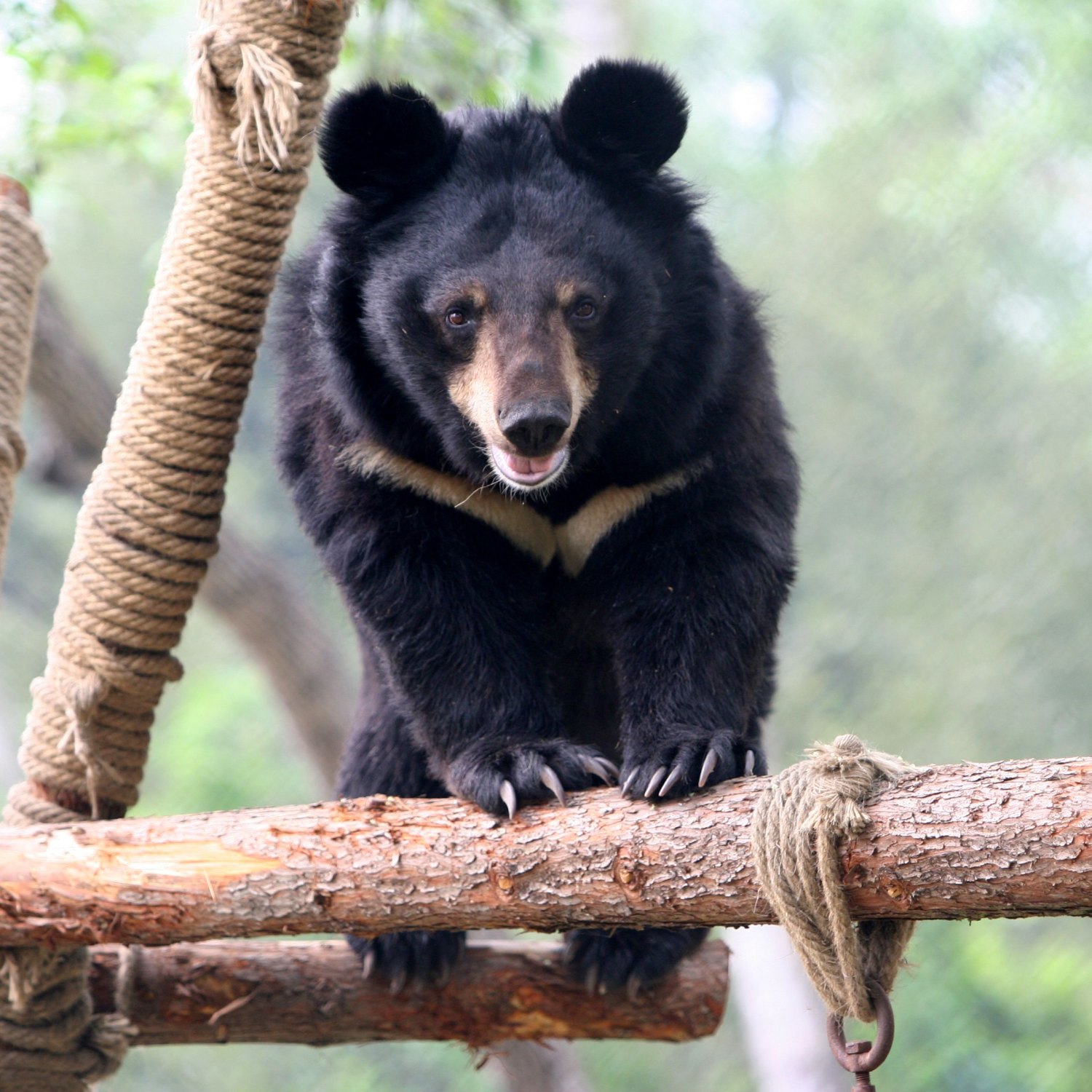
Asiatic Black Bear
5 to 6 feet (1.5 to 1.8 meters)
The Asiatic Black Bear, also known as the moon bear, is a medium-sized bear found in Eastern Russia, China, Korea, Japan, and Southeast Asia. With a body length of 5 to 6 feet and a stocky body, these bears are known for their prominent shoulder hump. Belonging to the Ursidae family, this majestic creature plays a vital role in maintaining the biodiversity of its habitat. #AsiaticBlackBear #Ursidae #MoonBear
Animal Details Summary:
Common Name: Asiatic Black Bear
Kingdom: Animalia
Habitat: Forests, mountains, and hills
The Mysterious and Captivating Asiatic Black Bear
Deep in the forests, mountains, and hills of Asia resides a creature that has mesmerized people for centuries with its elusive nature and striking appearance. This medium-sized, omnivorous animal is none other than the Asiatic Black Bear, also known as the Moon bear due to the white crescent-shaped marking on its chest. With its scientific name Ursus thibetanus and its common name derived from its Asiatic range, this fascinating creature holds many secrets waiting to be unraveled.While other bears may take the spotlight, the Asiatic Black Bear remains a mysterious and lesser-known species Asiatic Black Bear. But that doesn't make it any less captivating. From its unique appearance to its behavior and habitat, there is much to discover about this enigmatic animal. Let's take a closer look at the Asiatic Black Bear and uncover the wonders of this elusive creature.
The Basics: Kingdom, Phylum, Class, Order, and Family
Before delving into the specifics of the Asiatic Black Bear, let's first understand its classification. Like all living organisms, this bear belongs to a kingdom, phylum, class, order, and family. The Asiatic Black Bear's kingdom is Animalia, which means it is a multicellular, eukaryotic organism capable of movement and reproduction.Next is its phylum, which is Chordata. This phylum includes animals with a notochord, a flexible rod-like structure that gives support to the animal's body. In the case of the Asiatic Black Bear, it has a spine, which falls under the definition of a notochord Amazon Parrot.
The class of this bear is Mammalia, which means it is a warm-blooded animal with fur or hair, glands that produce milk, and the ability to give birth to live young. This class includes animals such as whales, bats, and of course, bears.
The Asiatic Black Bear belongs to the order Carnivora, which includes animals with sharp teeth and claws for hunting prey. However, this bear is omnivorous, meaning it feeds on both animal and plant matter, making its diet more diverse than other carnivorous animals.
Finally, the family of the Asiatic Black Bear is Ursidae, which means it is closely related to other bears such as the American Black Bear, Brown Bear, and Polar Bear.
Home in the Wild: Habitat and Geographical Distribution
The natural habitat of the Asiatic Black Bear is quite diverse, ranging from forests and woodlands to steep cliffs and mountainous regions. Due to its adaptable nature, this bear can thrive in different environments and altitudes. However, it prefers areas with sufficient vegetation cover and access to water sources.The geographical distribution of the Asiatic Black Bear covers a vast region in Asia, including countries such as China, Japan, Korea, Russia, and Southeast Asia. This widespread distribution is one reason why this bear is also known as the Asiatic or Asian Black Bear.
In the wild, the Asiatic Black Bear is a solitary animal and prefers to stay hidden in dense vegetation. This elusive nature makes it challenging to study and observe in its natural habitat, adding to its mystery and allure.
The Art of Feasting: Feeding Methods and Diet
As an omnivorous animal, the Asiatic Black Bear's diet consists of a variety of foods including insects, fruits, nuts, bird eggs, rodents, carrion, and honey. Its strong, sharp claws make it able to dig up roots and break open bee hives to access honey.During the warmer months, this bear consumes a significant amount of plant food, while in the colder months, it relies more on animal protein. Interestingly, the Asiatic Black Bear has a unique digestive system that allows it to digest even the toughest plant materials.
As expert foragers, these bears have an exceptional sense of smell, which helps them locate food from a distance. This keen sense of smell also helps them scavenge and locate food hidden underground, giving them an advantage over other animals.
A Closer Look at Appearance: Body Shape, Coloration, and More
The Asiatic Black Bear has a distinct body shape compared to other bears. It has a stocky build, with a prominent shoulder hump, and a long snout. Its limbs are relatively short, and it has large, powerful paws that allow it to easily climb trees, dig, and swim.One of the most striking features of the Asiatic Black Bear is its predominantly black fur, which lends it its common name. However, not all bears have the same coloration. Some individuals may have a white or brown marking in the shape of a V on their chest, giving them the nickname "Moon bear."
The coloration is mostly a result of genetic factors, but environmental factors such as age and nutrition can also affect the color of a bear's fur. Interestingly, some individuals may even have a small amount of white fur on their chest, making each bear unique in its appearance.
A Bear's Size: Length and Weight
The average length of an Asiatic Black Bear ranges from 5 to 6 feet, making it a medium-sized bear in comparison to other bear species. However, size can vary depending on the bear's geographical location and the availability of resources in its habitat.The weight of this bear can range from 200 to 440 lbs, with males being larger and heavier than females. This size difference is primarily due to sexual dimorphism, where one gender is more prominent than the other. In this case, male Asiatic Black Bears can grow to be almost twice the size of females.
The Final Word: Protecting the Asiatic Black Bear
While the Asiatic Black Bear may be captivating and elusive, its population is facing significant threats. Habitat destruction and poaching are the primary causes of its decline in numbers. With forests being cut down for development, these bears are left with limited resources and are forced to compete with humans for food.Additionally, the bear bile industry is another major threat to the Asiatic Black Bear. In some Asian countries, bear bile is used for traditional medicine, despite there being many alternative treatments available. This demand for bear bile has led to the cruel practice of extracting bile from live bears, causing immense pain and suffering for these animals.
Fortunately, many organizations are working towards protecting and conserving the Asiatic Black Bear. Educational programs, reforestation efforts, and the promotion of alternative medicines are a few ways in which these organizations are making a positive impact.
In Conclusion
The Asiatic Black Bear may be a mysterious and lesser-known species, but it is a creature worthy of admiration and protection. Its unique appearance, behavior, and adaptability make it a fascinating animal, and its survival is crucial for maintaining balance in the ecosystem. Through education, awareness, and conservation efforts, we can ensure that this enigmatic creature remains a part of our world for generations to come. Now that we have uncovered some of the secrets of the Asiatic Black Bear, it is up to us to ensure its future survival.

Asiatic Black Bear
Animal Details Asiatic Black Bear - Scientific Name: Ursus thibetanus
- Category: Animals A
- Scientific Name: Ursus thibetanus
- Common Name: Asiatic Black Bear
- Kingdom: Animalia
- Phylum: Chordata
- Class: Mammalia
- Order: Carnivora
- Family: Ursidae
- Habitat: Forests, mountains, and hills
- Feeding Method: Omnivorous
- Geographical Distribution: Asia
- Country of Origin: Multiple countries in Asia
- Location: Eastern Russia, China, Korea, Japan, and Southeast Asia
- Animal Coloration: Mostly black, but can have a white or brown V-shaped chest marking
- Body Shape: Medium-sized bear with a stocky body and a prominent shoulder hump
- Length: 5 to 6 feet (1.5 to 1.8 meters)
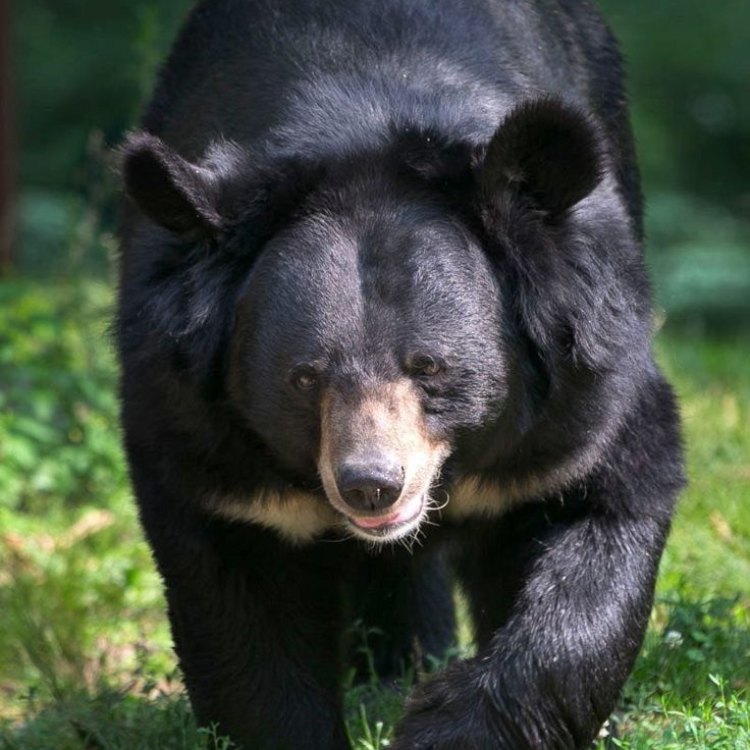
Asiatic Black Bear
- Adult Size: Around 150 to 400 pounds (68 to 181 kilograms)
- Average Lifespan: Up to 30 years
- Reproduction: Sexual
- Reproductive Behavior: Breeding occurs from May to July
- Sound or Call: Growls, huffs, wails, and bellows
- Migration Pattern: Some individuals may migrate in search of food
- Social Groups: Usually solitary, but can form small groups
- Behavior: Mainly nocturnal, with some activity during the day
- Threats: Habitat loss, illegal hunting, and poaching for body parts
- Conservation Status: Vulnerable
- Impact on Ecosystem: Help in seed dispersal and contribute to maintaining forest ecosystems
- Human Use: Hunted for their body parts, which are used in traditional medicine
- Distinctive Features: Prominent shoulder hump and a white or brown V-shaped chest marking
- Interesting Facts: 1. Asiatic Black Bears are also known as moon bears due to the crescent-shaped patch of light-colored fur on their chests. 2. They have a strong sense of smell and can detect food from long distances. 3. These bears are excellent tree climbers and often build nests in the trees. 4. Asiatic Black Bears are known to be good swimmers. 5. They are considered an umbrella species, meaning their conservation benefits many other species in their habitat.
- Predator: No significant predators

Ursus thibetanus
The Majestic Asiatic Black Bear: A Threatened Species with Unique Qualities
Deep in the forests of Asia, a magnificent and elusive creature roams. With its distinctive features and interesting behaviors, the Asiatic Black Bear (Ursus thibetanus) captures the attention of many. However, behind its alluring appearance lies a vulnerable species facing numerous threats. In this article, we will explore the fascinating world of the Asiatic Black Bear, from its physical characteristics to its role in the ecosystem PeaceOfAnimals.Com.Adult Asiatic Black Bears can reach an impressive size, ranging from 150 to 400 pounds (68 to 181 kilograms). This makes them the third-largest bear species in Asia, after the polar bear and the brown bear. They have a stocky and muscular build, with a prominent shoulder hump. Their glossy black coat is thick and shaggy, with lighter-colored fur on their chest and sometimes on their muzzle. Their most distinctive feature is the V-shaped marking on their chest, which can be either white or brown in color.
On average, these bears can live up to 30 years in the wild, with some individuals living up to 40 years in captivity. However, their lifespan is threatened by various factors, including habitat loss, hunting, and poaching. The reproductive behavior of Asiatic Black Bears is sexual, and breeding usually occurs from May to July. Females give birth to one to four cubs, which stay with their mother for 2-3 years until they reach sexual maturity American Cockroach. Sadly, many cubs do not reach adulthood due to the threats faced by their species.
When it comes to communication, Asiatic Black Bears have an unusual range of sounds. They can produce growls, huffs, wails, and even bellows. These vocalizations play an essential role in their communication with other bears, especially during the breeding season. Another interesting behavior of these bears is their migration pattern. While most individuals are solitary, some may migrate in search of food, particularly during periods of scarcity. This behavior is also observed in other bear species and highlights their adaptability to changing environments.
The behavior of Asiatic Black Bears is mainly nocturnal, with some activity during the day. This makes it challenging to study them in their natural habitat, and their elusive nature adds to the air of mystery that surrounds them. They are also known to be good climbers, using their sharp claws and muscular body to ascend trees to find food or build nests. Yes, you read that right – Asiatic Black Bears, despite their size, have the ability to climb trees and build nests on the branches to rest and sleep.
While these bears may not have significant predators, they are not exempt from threats. One of the most significant threats they face is habitat loss. As human populations grow and expand into natural habitats, the forests that these bears call home are being destroyed. This loss of habitat leads to a shortage of food, which can push them to venture into human settlements, making them more susceptible to illegal hunting and poaching for their body parts. It is estimated that up to 70,000 bears are killed each year for their gallbladders, paws, and other body parts, which are believed to have medicinal properties in traditional Chinese medicine.
The conservation status of Asiatic Black Bears is classified as Vulnerable by the IUCN Red List. This is due to the rapid decline of their population, estimated to have decreased by 30% in the last 30 years. However, despite their declining numbers, these bears play a vital role in the ecosystem. They are known as an umbrella species, meaning their conservation benefits many other species in their habitat. They help in seed dispersal, contribute to maintaining forest ecosystems, and regulate the populations of their prey species.
Unfortunately, the human use of Asiatic Black Bears poses a significant threat to their survival. In some areas, they are still hunted for their meat and body parts, despite the efforts of conservation organizations to educate and discourage such practices. However, there is hope for the future of these bears. Several conservation efforts are in place, including conservation breeding programs, habitat restoration, and community outreach programs. These efforts aim to raise awareness about the importance of these animals and their role in the ecosystem.
In addition to their importance in the ecosystem, Asiatic Black Bears also hold a special place in many cultures. In many Asian countries, these bears are considered sacred and have been featured in many mythological stories and folk tales. Their unique V-shaped chest marking has led to them being known as "moon bears," as this marking resembles a crescent moon. This adds to their mystique and makes them a symbol of nature and spirituality.
In conclusion, the Asiatic Black Bear is a magnificent and threatened species with many unique qualities. From its strong sense of smell to its ability to climb trees and its role in the ecosystem, these bears continue to fascinate and awe us. It is up to us, as humans, to ensure their survival and protect their natural habitats. Let us join hands in the conservation efforts and appreciate the beauty and importance of these majestic creatures.
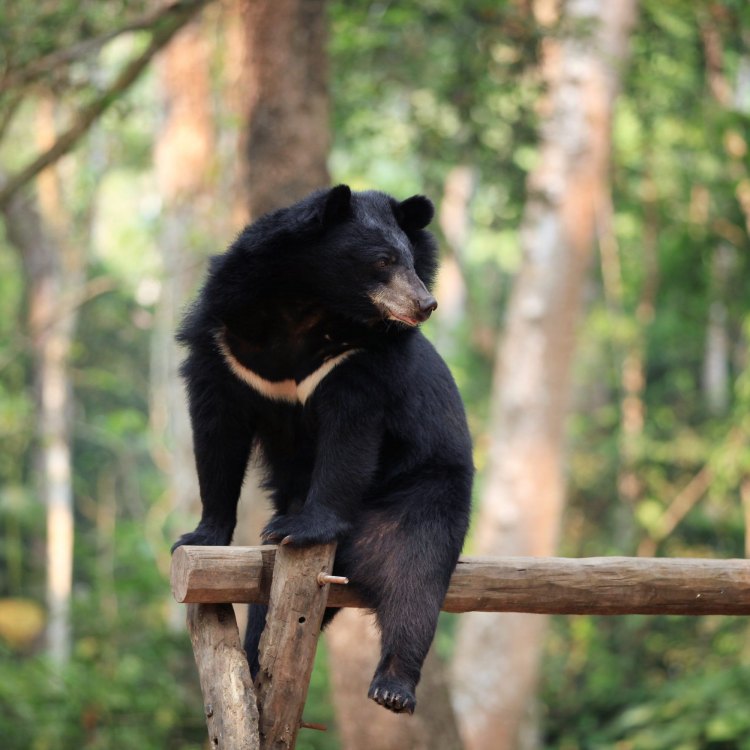
The Mysterious and Captivating Asiatic Black Bear
Disclaimer: The content provided is for informational purposes only. We cannot guarantee the accuracy of the information on this page 100%. All information provided here may change without prior notice.

